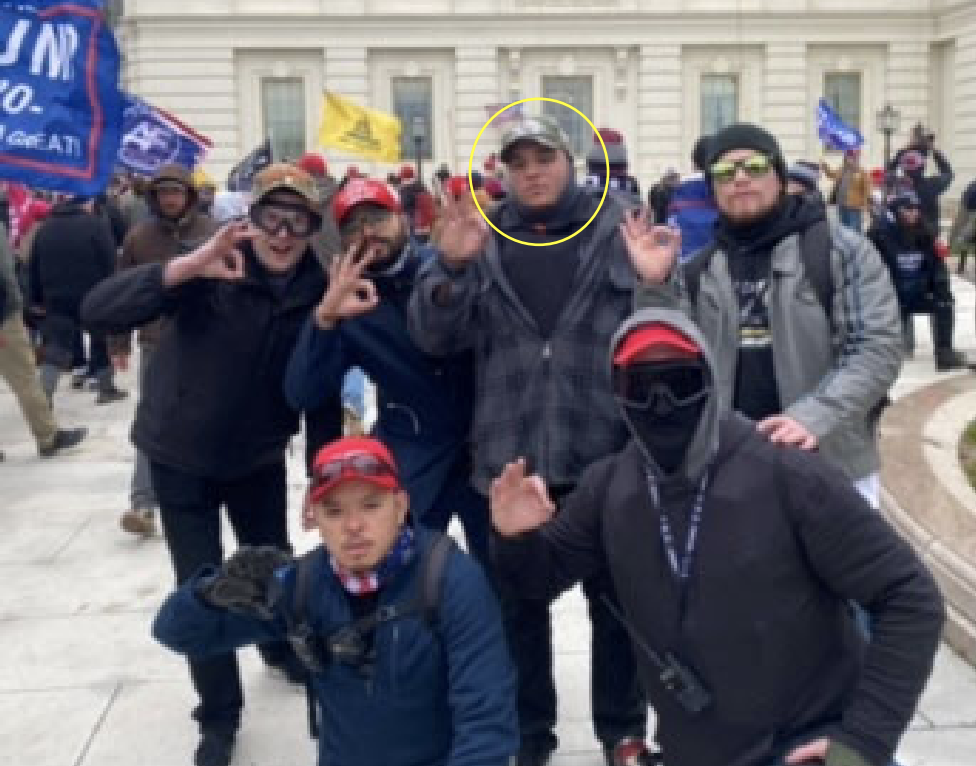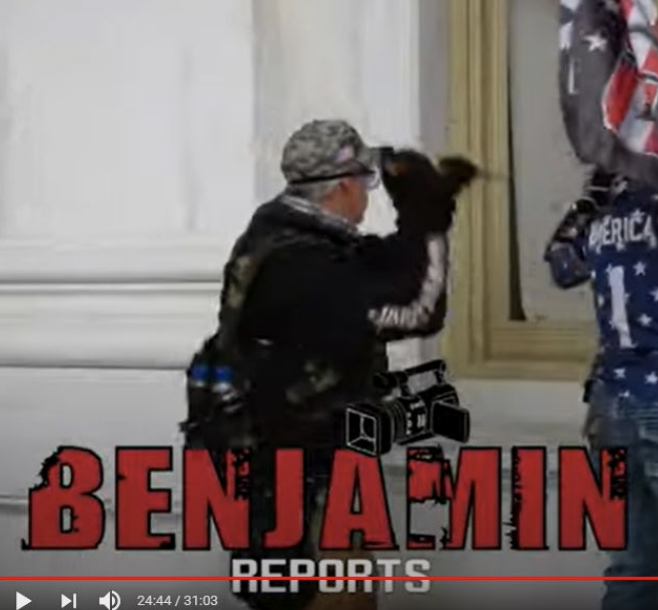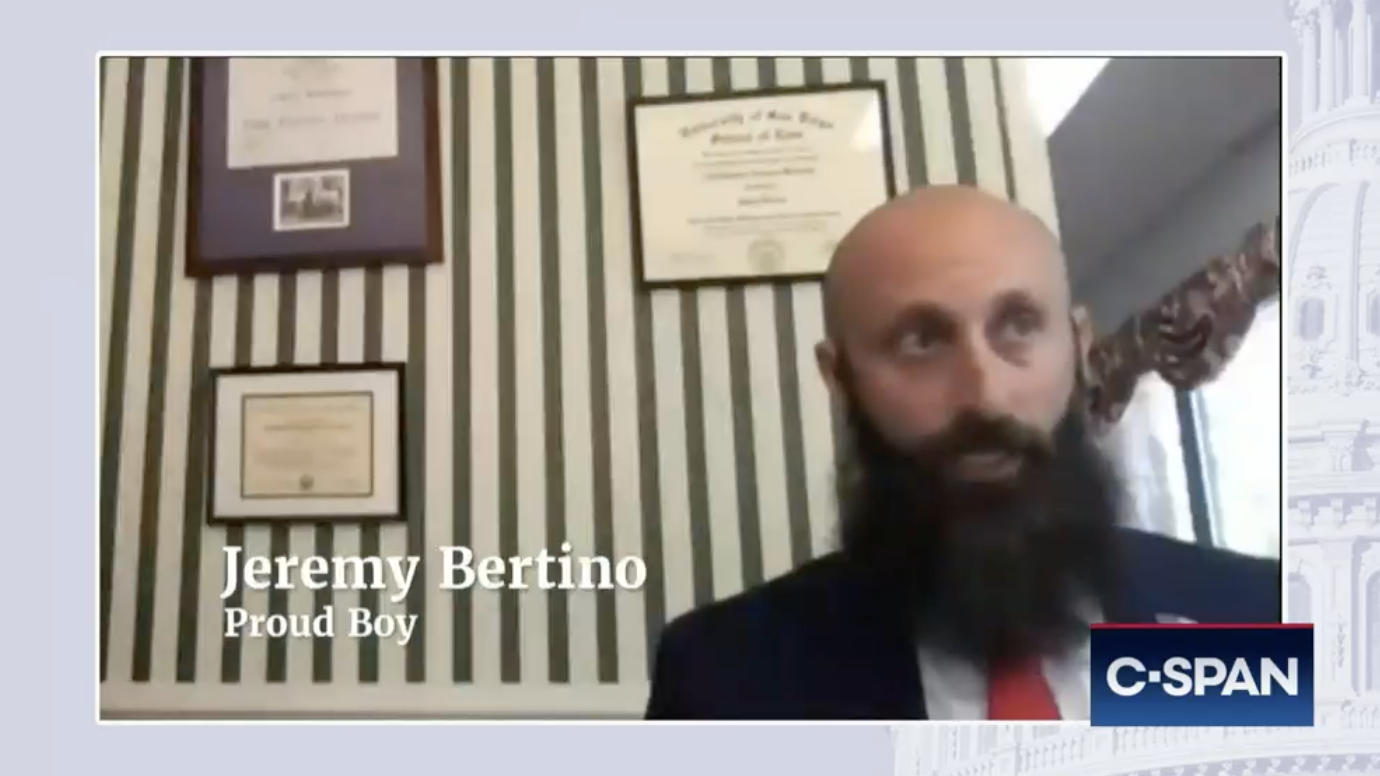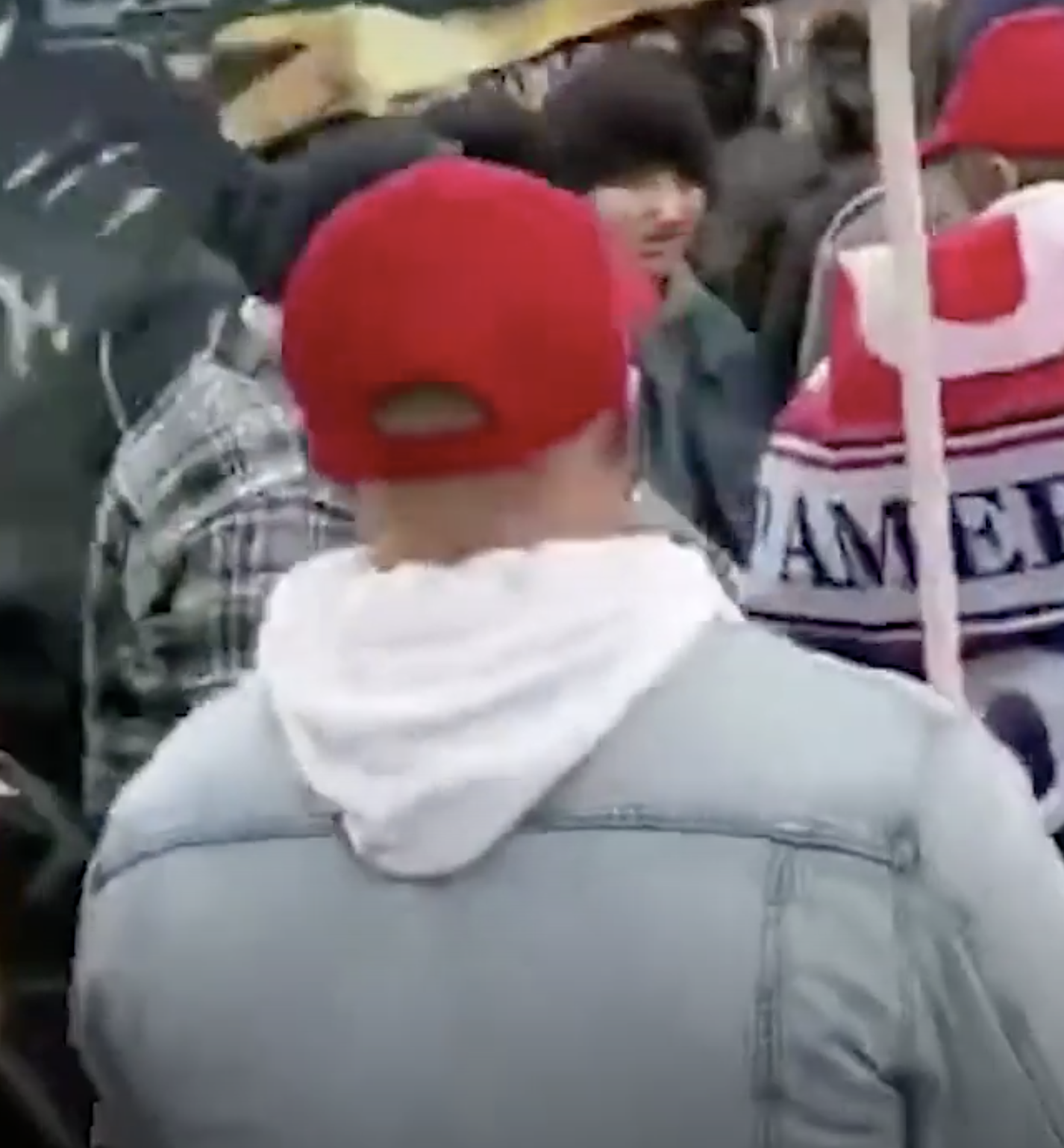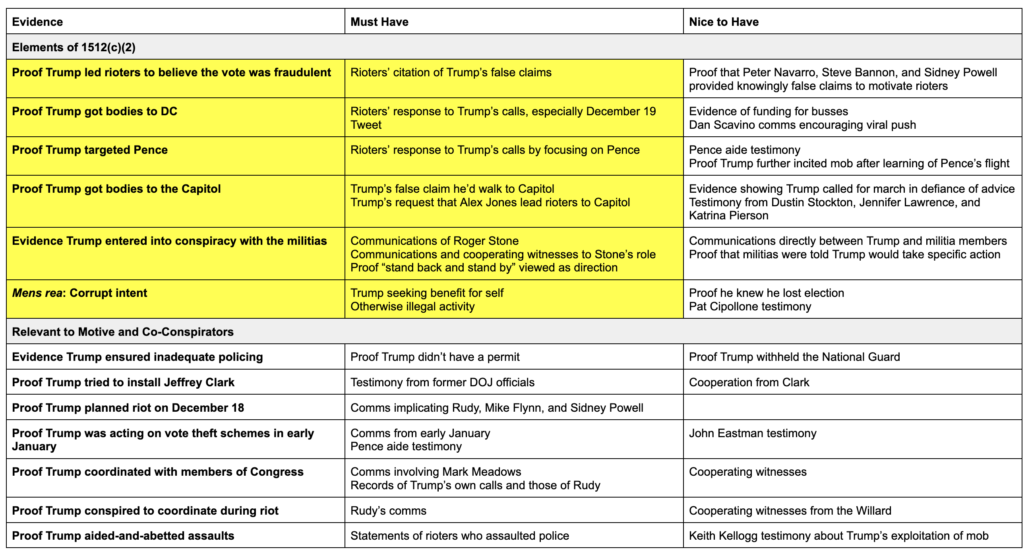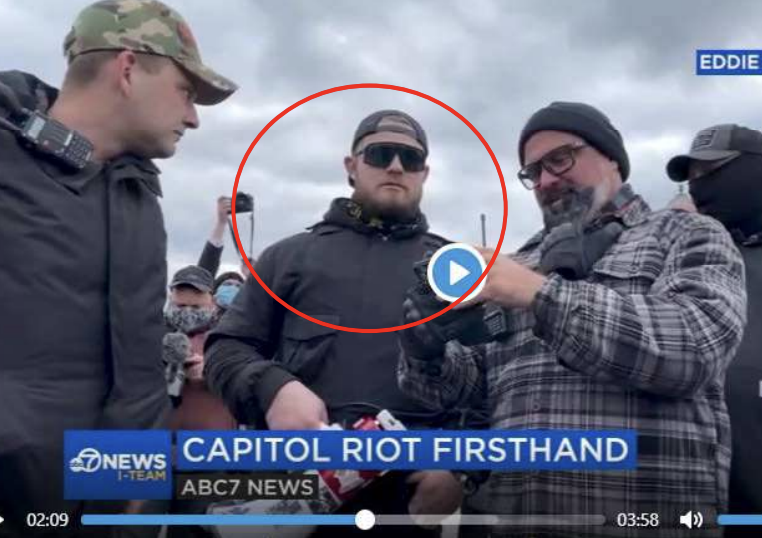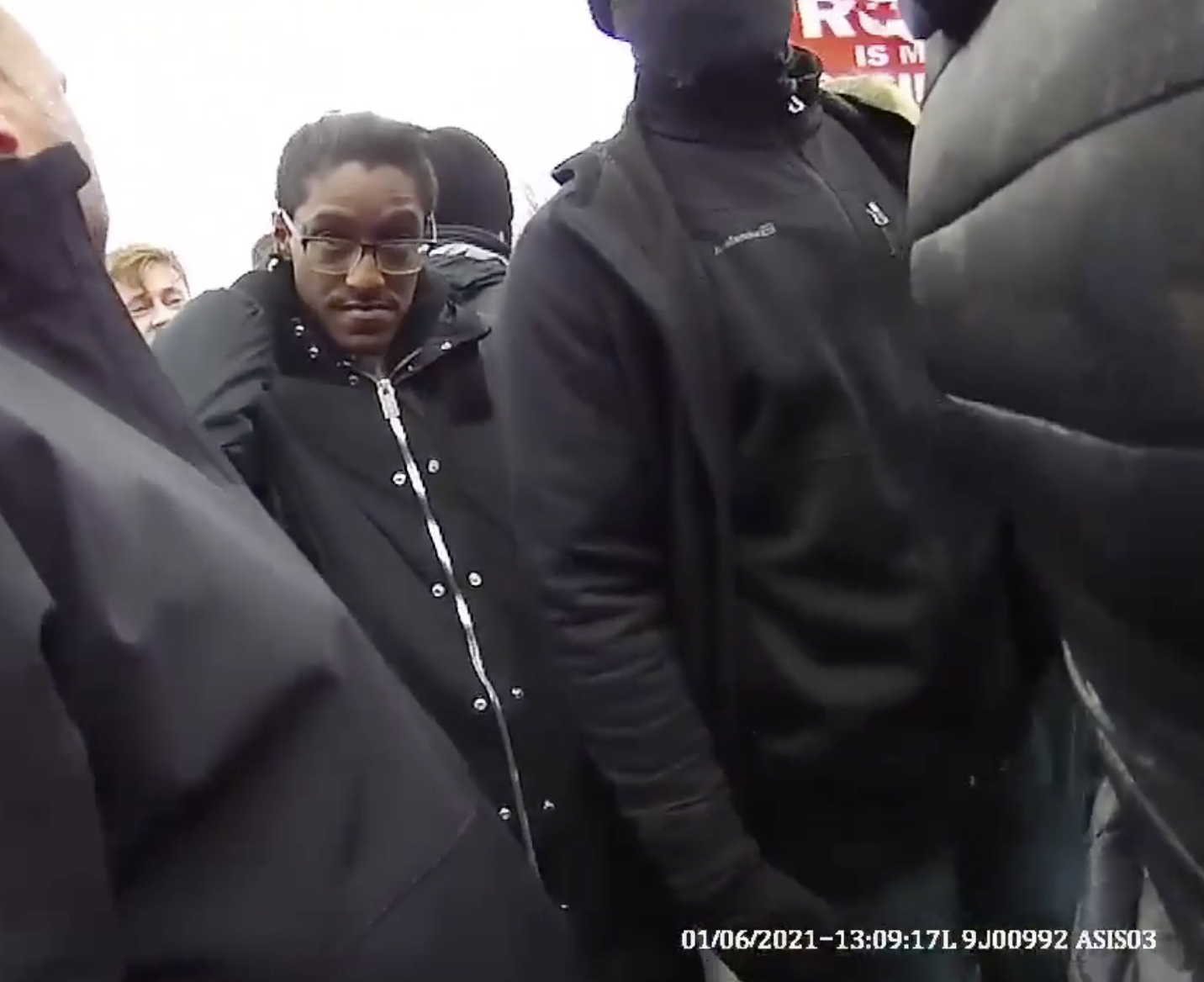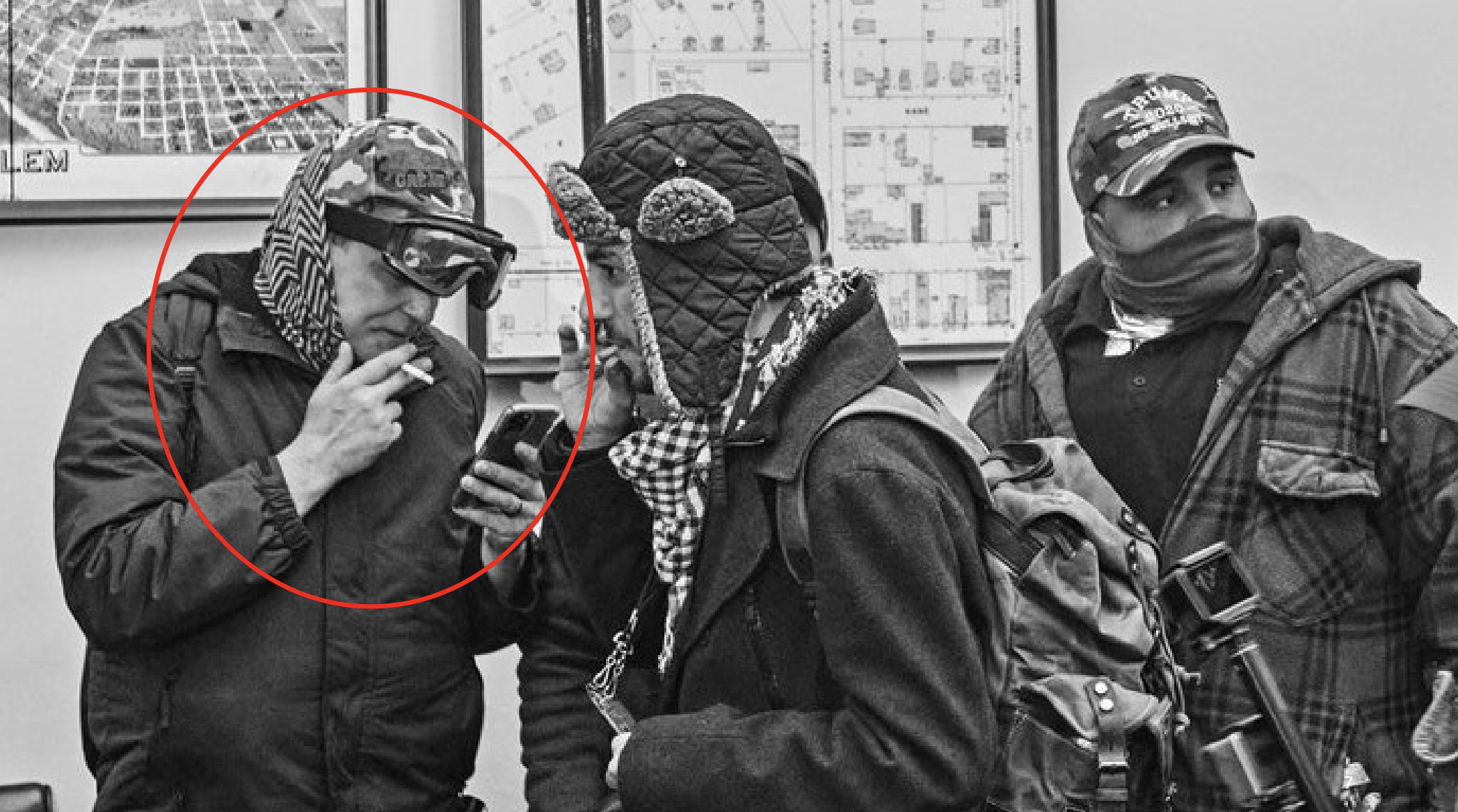Witnessing the Proud Boys
As I laid out here, defense attorneys in the Proud Boy leaders case have recently claimed that the government is pressuring potential defense witnesses to dissuade them from testifying.
Proud Boy defense attorneys are alleging that prosecutors are pressuring their defense witnesses with threats of prosecution. One person about whom their making the claim — about MPD lieutenant Shane Lamond, who has been suspended since last February under investigation that he helped the Proud Boys — their complaints are not credible. About others — including a female witness who might either be journalist Amy Harris, who spent a lot of time with Tarrio after he was released and to whom he said a lot of obvious self-exonerating statements, or Eryka Gemma, the woman who gave Tarrio a plan about The Winter Palace — defense attorneys claim they can provide sworn statements that prosecutors interviewed a witness without her attorney present. (I don’t trust either side in this case, so we shall see what actually gets filed.)
That is, as with the Oath Keeper trial, defendants are claiming that prosecutors are making witnesses unavailable with threats of prosecution (and as with the Oath Keeper trial, only some of those claims are credible).
The original complaint was aired in Enrique Tarrio’s bid to get his indictment thrown out unless DOJ immunizes Lieutenant Shane Lamond, an MPD cop whom Tarrio would alert to Proud Boy plans in advance. Tarrio submitted an updated motion to dismiss after the contentious December 2 hearing where this was aired, in which he argued that because the discovery he got didn’t show evidence of Lamond committing a crime, the government’s recent warning to Lamond that he’s at risk for an obstruction charge must be no more than an attempt to dissuade him from testifying in Tarrio’s defense.
During the past two years, the investigation, including the production of millions of pages of discovery, countless phone records and data dumps, thousands of hours of videos, and imbedded CHS informants, there has been no clear evidence of Lamond engaging in any illegal activity. The government was informed by the defense months ago of their intention to call Lamond to testify. At no point was Lamond in danger of being prosecuted, until now. On the eve of trial, the government contacted counsel for Lamond and informed him that Lamond’s actions might be considered obstruction of justice into Tarrio’s investigation and he may be prosecuted. Waiting until now is a tactical decision by the government to prevent Tarrio from exercising his constitutional right to present a defense. Knowing that Lamond’s testimony would exonerate Tarrio at trial and depriving Tarrio of his constitutional right is impermissible.
Preventing Lamond from testifying by holding an ostensible continuing investigation over his head violates Tarrio’s Sixth Amendment right to compulsory process of witnesses who would testify in his defense. If the government declines to immunize Lt Lamond, then the indictment against Tarrio should be dismissed.
But even in Tarrio’s description of his contacts with Lamond, the exchange sounds as much like a cover story as anything else.
Tarrio informed Lamond of the Proud Boys January 6 plans; to wit: they would not be wearing colors to protect themselves from being attacked and stabbed by Antifa as they had been on two previous occasions; they planned to be present to watch Trump’s speech; Tarrio planned to speak at the rally; they planned to protest the results of the election, and later that night they planned to party with plenty of beer and babes.
The Proud Boys eschewed colors to blend in, not for protection. There’s no evidence they ever planned to attend Trump’s speech (indeed, their choice to skip it is one detail that undermines all their excuses).
This particular challenge is highly unlikely to work. Lamond was suspended in February (not coincidentally shortly after FBI fully exploited Tarrio’s phone and even before Tarrio himself was charged), which wouldn’t have happened without fairly damning evidence. And back when the suspension was first disclosed, Tarrio made light of the contacts.
But Tarrio also said that during marches, Lamond would tell him the location of counterdemonstrators. Tarrio said that was so his group could avoid conflict, though after one violent night of demonstrations, police accused the Proud Boys of roaming the city looking for and instigating fights, targeting people they believed identified as antifa, or antifascists.
“He was just a liaison officer for when we held rallies,” Tarrio said of Lamond. He denied their relationship extended beyond that and said he is not a confidential informant for anyone on the D.C. police force.
“They’re just trying to get anybody at this point,” Tarrio said of investigators. “I only told him, ‘We’re coming into town and we’re going to hold this protest.’ That’s as far as the relationship went.”
Tarrio has been pursuing this line of defense since August, with little traction. Nothing is new about this scrutiny of Lamond, so the claim DOJ only recently floated some legal jeopardy doesn’t hold up.
Nevertheless, there have been several additional filings explaining the basis for the claims that the government was trying to make defense witnesses unavailable. In response to prosecutors’ observation at the hearing that Nordean was making allegations without backup, for example, Nordean’s attorneys submitted a “notice” of witness intimidation that provided few new details (though did submit the 302 for that specific witness to Judge Tim Kelly).
On December 2, counsel added there was evidence that after one such witness informed the government that she did not agree with the government’s claim that Nordean and others had conspired to attack the Capitol or use violence on January 6, a government prosecutor only then announced—in the same November 2021 interview—that the witness would be prosecuted for an offense. Shortly thereafter, counsel continued, an agent called this witness to advise that the prosecutor’s charging threat was inflated. In response, AUSA Erik Kenerson stated in the December 2 hearing that the notion that the “[g]overnment has somehow pressured witnesses, threatened witnesses, gone to witnesses when they were represented by counsel without counsel present, all of that is just categorically false.” The government added, “there has been nothing that the Government — that — has done that would warrant putting John Does on a witness list.”
The filing provided an excuse to reveal the identity of and submit a declaration from the witness, Adrienna DiCioccio, which would otherwise be sealed. She described how, in a November 2021, she told FBI Agents and prosecutors that she didn’t think Nordean and others were planning for violence on January 5.
During this second interview, the agents and prosecutors asked for my recollections about the evening of January 5 in the Airbnb residence where Ethan and others were gathered. I do not recall the specific words I used, but I informed the interviewers generally that I disagreed with the suggestion that Ethan and the others in his group were planning violence or an attack on the Capitol on January 6. I generally informed the agents and prosecutors that, as someone involved in planning peaceful events with the Proud Boys in the past, I disagreed with their suggestion that Ethan and others in the Airbnb were planning violence the following day in D.C.
But as to the substance of Nordean’s complaint — that the government was trying to pressure her not to testify by hanging criminal prosecution over her head — even DiCioccio’s filing undermined that, to say nothing of details provided in the government’s response. Most importantly, a transcript excerpt from an earlier interview shows she was warned of potential criminal exposure in a September 2021 interview, before she provided the testimony that — Nordean claims — led prosecutors to raise the specter of prosecution.
Ms. DiCioccio was interviewed twice: once in September 2021, and once in November 2021. It is the second interview that Nordean references and that is largely the subject of Ms. DiCioccio’s declaration. The transcript of Ms. DiCioccio’s first interview, which was produced to the defense in June 2022, belies any claim that the government only informed her of her potential criminal liability after “she did not agree with the government’s claim that Nordean and others had conspired to attack the Capitol or use violence on January 6,” as Nordean contends. Id. The below quote is from page 202 of the transcript of the first interview:
MS. DiCIOCCIO: Okay, because you guys were mentioning, you know, earlier, the other person cooperated very well with everything. You know, turned themselves in. I know you guys have things to go over, but, what am I looking at, at the moment? Should I be really scared? Should I be –
[AUSA]2 : The investigation is ongoing. Decisions are still being made. I mean, there are criminal charges that are out there, potentially, and maybe even likely. But it all depends on what we’re looking at (indiscernible).
MS. DiCIOCCIO: Okay.
[AUSA]: Again, I would say, let’s keep the lines of communication open.
MS. DiCIOCCIO: Yeah.
[AUSA]: So that we can have those types of conversations when it’s time to pull those types of triggers.
MS. DiCIOCCIO: Okay.
In other words, Ms. DiCioccio was informed in September 2021, well before the interview during which Nordean claims she was threatened with charges for refusing to tell the government what it wanted to hear, that she “potentially, maybe even likely” faced criminal charges. This was not news to her: video evidence of her offense conduct captures her saying, “Are we all gonna get arrested?” as she entered the Capitol building. After the first interview, Ms. DiCioccio agreed to voluntarily meet with prosecutors and agents again in November. As noted above, Ms. DiCioccio’s declaration is inaccurate, and the government submits that the FD-302 submitted by counsel describes an unremarkable interaction between prosecutors, FBI agents, and a potential cooperating witness.
2 The AUSA who participated in this interview was not any government counsel of record in this case.
The government response also shows that, not only did Nordean’s attorneys not submit anything to substantiate the allegation that the government met with DiCioccio without her retained counsel present, they provided her with information on how to get one.
Ms. DiCioccio’s declaration does not substantiate Nordean’s inflammatory accusations. For example, contrary to counsel for Nordean’s representations at the December 2, 2022, hearing, Ms. DiCioccio does not assert in her declaration that she had counsel who was not present during the interview. See Dec. 2, 2022, Hr’g Tr. at 58; 579-1. Nor does she say, as defense counsel asserts, that she had an attorney at the time of the interview. The FD-302 instead memorialized that the prosecutor suggested Ms. DiCioccio seek counsel and went so far as to provide her with a form to help her obtain a court-appointed one. In other words, rather than seeking to circumvent Ms. DiCioccio’s access to counsel (as Nordean wrongly asserted), the government affirmatively facilitated it.
There’s nothing all that compelling about the fact that a witness who breached the Capitol might be at legal exposure herself. While snide, the government suggests that DiCioccio was just upset because of her own criminal exposure (criminal exposure that, over a year later, has yet to be charged).
It is not surprising that the subject of a criminal investigation may be upset after being questioned about her conduct that led to that investigation. But any unease on Ms. DiCioccio’s part was not caused by impropriety by the government. It was instead caused by her own criminal conduct on January 6, 2021, and the fact that she may have to reckon with that conduct.
And again, all this happened long before any talk of trial witnesses.
One part of Zach Rehl’s parallel complaint might have more merit though (or is, at a minimum, of some interest procedurally).
It was filed — as was Nordean’s “notice” — on December 9, a week after the contentious hearing. But that would also put it more than a week after Rehl co-traveler Isaiah Giddings’ plea deal, in which he described that he didn’t even know the vote certification was happening on January 6 but he followed Rehl along obediently. There were a number of things in Giddings’ statement of offense that implicate Rehl, including that Rehl believed “someone had to do something” about the purportedly stolen election and that Rehl tried to find some bear spray in the middle of the riot. But as Rehl attorney Carmen Hernandez notes in the filing, Giddings did not admit to a plan to obstruct the vote certification.
Despite an inordinately lengthy Statement of Offense for a misdemeanor and multiple mentions of Mr. Rehl, there is no assertion that Mr. Rehl had a plan to interfere with Congress by force or corruptly.
Much of the rest of Hernandez’ filing requests either that Kelly immunize Giddings’ two co-defendants, Brian Healion and Freedom Vy (whom she doesn’t name), or sever Rehl from his own co-defendants and delay trial until after Healion and Vy’s case is resolved, making them available as witnesses.
At this level, this is just tactical. DOJ seems to be delaying a bunch of the Proud Boy cases until after the Proud Boy leader trial, but for reasons that arise from managing a larger conspiracy. Healion and Vy are only differently situated from DiCioccio in that they’ve already been charged, but they’re both genuinely implicated themselves.
Of more interest is Hernandez’ complaint about Jeff Finley (again, she doesn’t name him), the last co-traveler with Rehl the day of the attack. As she describes, Finley pled guilty last April, but his July sentencing was continued until February, putting it, like the Philly area Rehl co-travelers, after the trial.
One of the witnesses noted above entered a guilty plea to a misdemeanor on April 6, 2022.3 The statement of facts entered in the case shows that the witness does not implicate Mr. Rehl in any attempt to interfere with Congress by force or corruptly. Sentencing in the case was originally 4 scheduled for July 19, 2022. At the request of AUSA Jason McCullough, the July sentencing was vacated. Sentencing is now to be scheduled on February, 13, 2023 or a later date, after Mr. Rehl’s 5 trial is completed. Because a defendant retains a right to assert a claim to remain silent under the 6 Fifth Amendment until after sentencing isimposed, Mitchell v. United States, 526 U.S. 314 (1999), that witness is now unavailable to Mr. Rehl. By delaying the sentencing of this witness until after Mr. Rehl’s trial has concluded, the government has placed that witness outside Mr. Rehl’s Sixth Amendment right to compulsory process and has impeded Mr. Rehl’s right to present a complete defense.
As with Giddings’ statement of offense, Hernandez judges that Finley’s doesn’t support the charges against Rehl, though it does incriminate him. Plus, there is at least one additional Finley proffer that was provided to the Proud Boy leaders by last May. But given other discovery deadlines, Hernandez should know by now if such a proffer was expected to result in trial testimony (in which case, she would have no problem obtaining his testimony as a government witness).
This, too, is tactical (and an effort to preserve all this for appeal). But I find it curious that Finley also objected to testifying under subpoena.
Undersigned counsel has spoken to counsel for each of the three witnesses. All three have 2 indicated that if subpoenaed to testify, their clients would assert their Fifth Amendment rights to remain silent in light of the posture of their own cases. The delays that have made these witnesses unavailable are attributable to government conduct.
That doesn’t seem to accord with being a voluntary, cooperative witness for DOJ. It would suggest that he may still face vulnerability even in spite of his plea agreement, such as if DOJ discovered something he said in a proffer was not true.
The Proud Boys, far more even than the Oath Keepers, had ties to a great number of people who have their own exposure for January 6. And unlike the Oath Keepers, rather than flipping their way up to the leaders, DOJ seems to be starting with this leader conspiracy, with the likelihood of follow-on charges for others after the fact (in fact, Stewart Rhodes’ very good attorneys, James Bright and Phil Linder, just replaced John Pierce as Joe Biggs’ co-traveler Paul Rae’s defense attorneys). That’s an unusual way of prosecuting a complex conspiracy (though as I’ve written, the Proud Boy leaders may also be a necessary step before prosecuting those between them and Trump). But at least partly as a result, that means there are a great number of Proud Boys and associates out there, potentially friendly witnesses, but also defendants themselves.
And that, the Proud Boy leaders claim, amounts to an unconstitutional deprivation of defense witnesses
Update: Here’s the government response to Rehl (it cites another complaint from Nordean). In the section on Finley, DOJ says sometimes the government finds inculpatory video after someone pleads guilty.
The government notes – without suggesting that this is true in Mr. Finley’s case – that the January 6 investigation is replete with instances where a defendant has entered a plea of guilty only to have the government or counsel identify additional instances of criminal conduct by the defendant through diligent review of videos. Thus for many defendants, even those who have been sentenced, it is possible that defense counsel may believe that their client continues to have a legitimate Fifth Amendment privilege.

